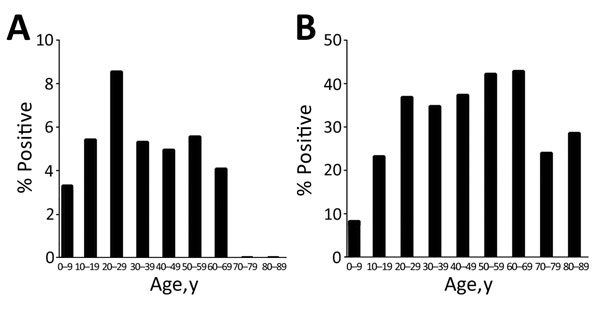Volume 24, Number 8—August 2018
CME ACTIVITY - Research
Ancylostoma ceylanicum Hookworm in Myanmar Refugees, Thailand, 2012–2015
Figure 3

Figure 3. Baseline prevalence of hookworm infections in 1,839 US-bound Myanmar refugees at 3 camps along the Myanmar–Thailand border, by age group, Thailand, 2012–2015. A) Ancylostoma ceylanicum hookworm. B) Necator americanus hookworm.
1These authors contributed equally to this article
Page created: July 11, 2018
Page updated: July 11, 2018
Page reviewed: July 11, 2018
The conclusions, findings, and opinions expressed by authors contributing to this journal do not necessarily reflect the official position of the U.S. Department of Health and Human Services, the Public Health Service, the Centers for Disease Control and Prevention, or the authors' affiliated institutions. Use of trade names is for identification only and does not imply endorsement by any of the groups named above.